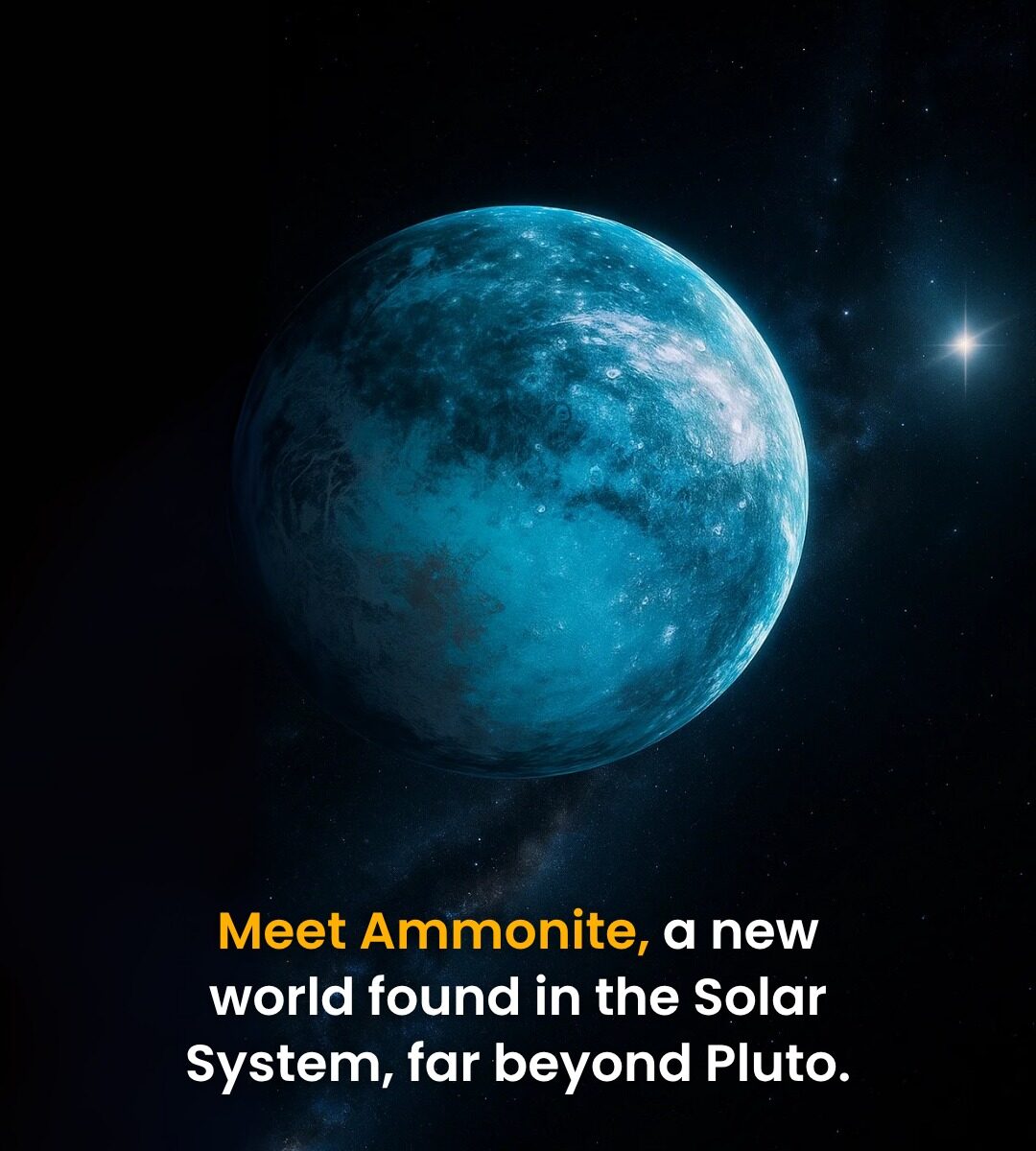Ammonite: Mysterious Fossil World Discovered Beyond Neptune with a 4,000-Year Orbit
Astronomers have discovered Ammonite — a distant, frozen world officially designated 2023 KQ₁₄ — orbiting far beyond Neptune. With a perihelion of 66 AU (twice Neptune’s distance) and a semi-major axis of 252 AU, Ammonite takes a staggering ~4,000 years to complete a single orbit around the Sun.

Tracked Across Decades
This icy relic was spotted thanks to nearly 19 years of archival data from observatories like Subaru, CFHT, DECam, and Kitt Peak. Its orbit has remained remarkably stable for over 4.5 billion years, earning it the nickname “fossil of the ancient Solar System.”
Orbit That Defies the Pattern
Most known “sednoids” — like Sedna, 2012 VP113, and Leleākūhonua — follow similar orbital paths, hinting at a shared gravitational past. But Ammonite is different. Its orbit points in almost the opposite direction, filling a puzzling gap in our map of the outer Solar System.
What Does It Mean?
Ammonite may hold clues to ancient solar system dynamics — perhaps a close pass from a long-lost stellar sibling or stronger constraints on the mysterious Planet Nine. Simulations suggest it once orbited in sync with the other sednoids before diverging over billions of years.
A Guidepost to the Unknown
Ammonite’s discovery suggests more hidden worlds could be lurking in the deep. Future surveys and improved models may help us uncover these secrets — and reveal the full story of how our Solar System came to be.
RESEARCH PAPER
Ying-Tung Chen et al, “Discovery and dynamics of a Sedna-like object with a perihelion of 66 au,” Nature Astronomy (2025).
